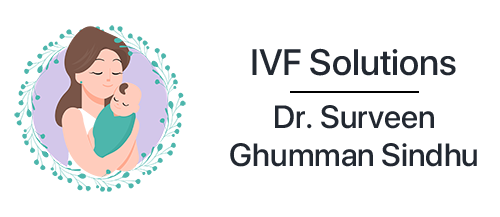Blogs
Learn more about what infertility is all about. Read Dr Surveen’s articles to get more information!
Subscribe to Newsletter
Micro TESE & IVF/ICSI Progress in Male Infertility (Azoospermia)
By Dr. Surveen Ghumman Sindhu: Over the last 10 years the rapidly innovating technology in assisted reproduction has enabled male infertility due to men with very low sperm count to become fathers. Where earlier sperms were needed in the millions now only 2-3 sperms are needed for intracytoplasmic sperm injection leading
Poor Ovarian Reserve And IVF – Low Anti Mullerian Hormone (AMH)
By Dr. Surveen Ghumman Sindhu: Poor ovarian reserve can be measured by Antimullerian hormone, Antral Follicle Count and FSH on day 2 of the period. In recent years, much dependence has developed on AMH as a marker as it has many advantages. Advantages of AMH as an ovarian reserve
Thin Endometrium in IVF
By Dr. Surveen Ghumman Sindhu: Thin endometrium is a source of concern as implantation would not occur while attempting an IVF, IUI or a natural conception. While evaluating the endometrium there are a few parameters to be taken into account Endometrial parameters for assessment: Thickness – It should be

Low Sperm Count And Its Treatment
Male infertility is on the rise and now the male is equally responsible for infertility. Over the years has been seen that sperm count is falling along with the quality of the sperms deteriorating, with lower motility and morphology. While assessing the semen it is not just the number of
How IVF Has Evolved In The Society Today
By Dr. Surveen Ghumman Sindhu: There has been a 50% jump in infertility in the last 30 years, with women delaying marriages and childbirth and focusing on their careers. There is also, an increase in conditions like polycystic ovarian disease and premature ovarian failure which contribute to increasing infertility. Sperm
Obesity & Its Impact on Fertility and IVF Success
By Dr. Surveen Ghumman Sindhu: In the last few decades there has been a change in lifestyle and socioeconomic conditions globally. This has led to rise in obesity. Obesity has now become a major epidemic. Rising incidence of obesity is seen both in developed and developing countries. In England it is

Role of Diet in IVF Success
Fertility diet includes food which would enhance the egg and sperm quality, build a good lining of the uterus to house the baby, provides the body with good hormones for reproduction and supports a healthy pregnancy. Free radicles may damage the egg and the sperm. Antioxidants fight this dame preventing
Top Facts You Should Know About IVF Treatments
1. Success rates IVF has a success rate of 50% in young women the rate drops with age over 35 and is only 20% when women is over 40years. Success depends on a number of factors such as the cause of infertility, age and lifestyle. 2. At what age must
When and in Whom should IVF be done?
There are specific indications for IVF and it should only be done if these are fulfilled. Below are the indications for IVF 1. Male Factor Infertility 2. Absent or Damaged Fallopian Tubes 3. Endometriosis 4. Unexplained Infertility 5. Recurrent Intrauterine Insemination Failure 6. Tubal and Pelvic Adhesions 7. Poor ovarian
Fertility Check – Identifies Infertility related to decreased ovarian reserve
Fertility check gives you an idea of how well your ovaries are working. Usually at birth 1000,000 eggs are present these come down to 1,00,000 at 35 when fertility is decreased and at 40 they are 10,000 when chances of pregnancy are greatly reduced. Thus a woman’s fertility decreases with
Male Infertility and Microtese – Hope for those with no sperms
Male infertility is on the rise. Semen quality and sperm counts are falling. The only male is now responsible for 40%. This is an increase from 25% earlier. The falling sperm counts have been blamed on lifestyle factors like poor diet, stress, lack of exercise, alcohol, smoking and cell phones.
Why Should You Know About IUI (intrauterine insemination) Success Rate ?
Intrauterine insemination (IUI) involves a laboratory procedure to separate fast moving sperm from more sluggish or non-moving sperm. The fast moving sperms are then placed into the woman’s womb close to the time of ovulation when the egg is released from the ovary in the middle of the monthly cycle.

